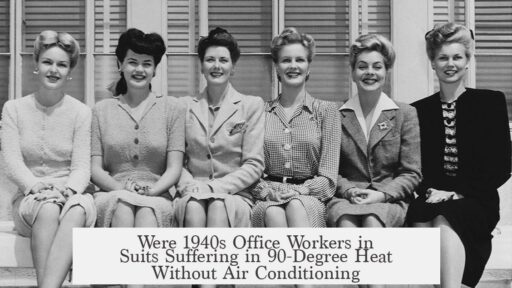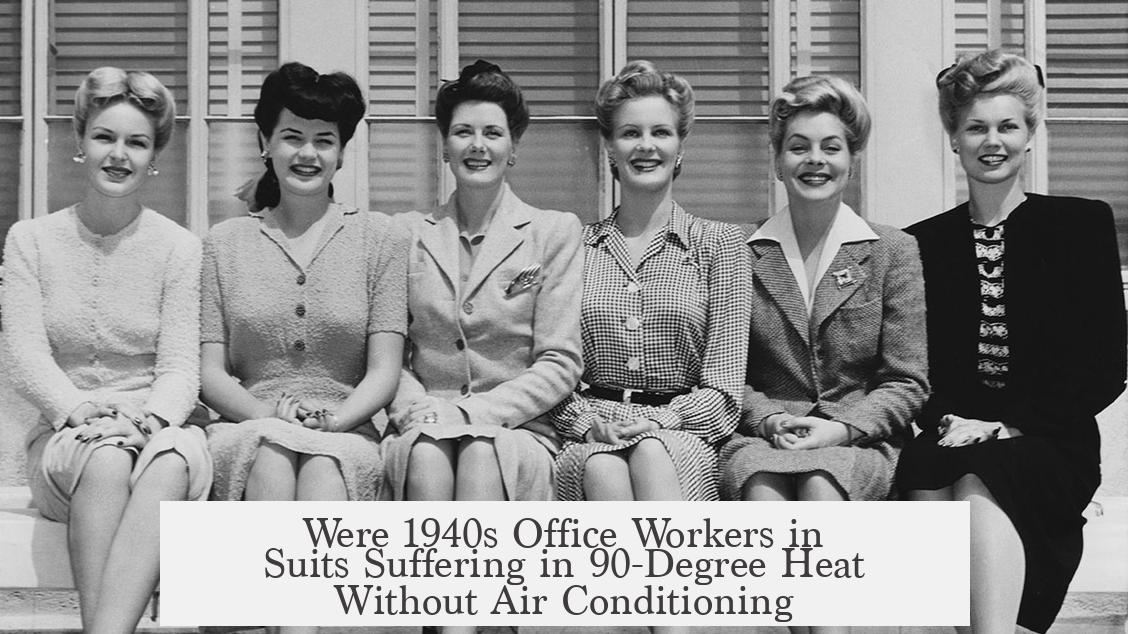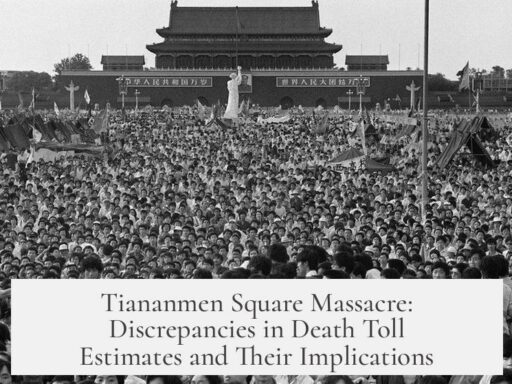While residential air conditioning in the US became common only in the 1970s and 1980s, many commercial buildings, including offices and cinemas, had cooling systems long before that. So, in 1940s offices full of fully suited men, workers were not just suffering through 90 degree heat in shirt and jackets; instead, they experienced uneven but real cooling solutions that kept temperatures more tolerable.
Commercial air conditioning in the mid-20th century was complex and bulky compared to today’s systems. A large building often required a dedicated cooling floor filled with equipment. These systems typically used a cooling tower on the roof, which circulated water through coils to cool warm air inside the building. Although this method did not cool as efficiently as modern air conditioning, it did reduce indoor temperatures considerably.
The cooling system worked like this:
- Water circulated through coils where warm air was passed and cooled.
- The warmed water was sent to a rooftop cooling tower to be cooled again.
- This cycle repeated continuously to maintain cooler indoor air.
This system had pros and cons. It used less electrical energy than some more modern methods but consumed a significant amount of water. Also, the air conditioning was uneven, creating hot spots, cold spots, and muggy areas inside offices. Unlike today’s highly regulated HVAC systems, early commercial air conditioning sometimes felt inefficient.
Cinemas were pioneers in adopting air conditioning. They installed cooling early to attract audiences, especially in hot weather. However, even cinemas experienced uneven temperature zones, so comfort varied throughout the space.
Another factor was ventilation. Some office buildings relied largely on ventilation with fans moving large volumes of air to maintain airflow rather than truly cooling the air. Opening windows was also still common, allowing fresh air circulation—a feature missing in most modern sealed buildings.
Regional and architectural differences shaped the cooling experience as well. Tower-style buildings and warehouse-style facilities had unique challenges. What worked well in one climate or building type might not be suitable in another.
In 1940s offices, workers wore shirts and jackets as standard professional attire. Despite the heavy clothing, office temperatures were usually kept below outside outdoor heat levels. Although offices lacked the uniform coolness of today’s buildings, employees typically did not endure full 90-degree heat indoors.
Ventilation and early cooling efforts created a working environment that was warmer and occasionally uncomfortable but not extreme. The presence of cooling towers and fans helped mitigate temperatures, and employees could open windows to ease the heat further.
The evolution of clothing throughout the century also affected perceptions of heat. Work attire norms were stricter in the past, with less emphasis on comfort-style clothing that prioritizes breathability. This contributed to a perception that office workers “suffered” in heat, but in most cases, some air movement and cooling existed.
For those interested in historical office climate and workwear, resources such as answers by historians and experts on working conditions provide deeper context. They underline that workers in the past generally tolerated less optimal cooling but were not subjected to unbearable heat conditions indoors.
| Aspect | Details in 1940s Offices |
|---|---|
| Commercial AC Systems | Large, complex, water-cooled towers on rooftops; consumed water and energy |
| Cinema Air Conditioning | Early adopters; uneven cooling with hot/muggy/cold spots |
| Ventilation | Fans circulating air; frequent window use for fresh air |
| Office Temperature in Hot Weather | Below outdoor temps; not efficient but mitigated 90°F outside temps |
| Clothing Norms | Formal suits common; perception of heat affected by attire standards |
- Commercial air conditioning systems existed in many 1940s offices despite limited residential cooling.
- Large rooftop cooling towers cooled buildings via water circulation and coils.
- Cooling was uneven, creating hot and cold spots indoors.
- Offices were ventilated with fans and open windows to improve comfort.
- Workers wore formal attire but typically did not endure full 90-degree heat inside.
Were the Suited Office Workers of the 1940s Just Sweating in 90-Degree Rooms?
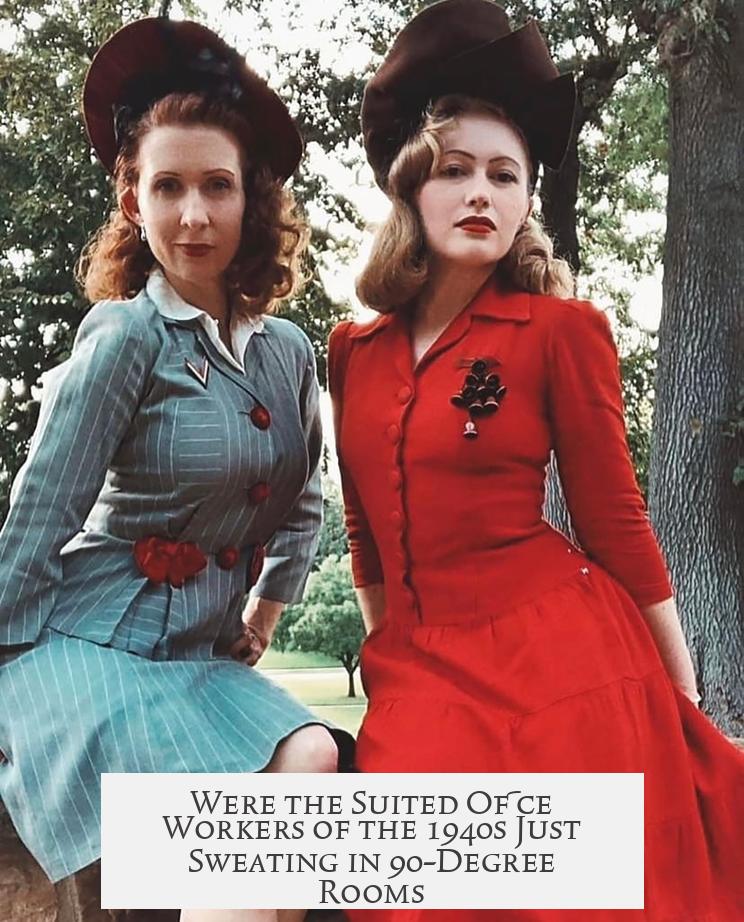
Answer: No, those sharply dressed men in their suits inside the 1940s offices weren’t simply baking under the weight of shirt and jacket in full-blown 90-degree heat. While residential air conditioning was a rarity until the late 70s or early 80s, many commercial buildings back then already had complex—but somewhat imperfect—cooling and ventilation systems in place. So although office environments were far from today’s cool perfection, there was a real, mechanical effort to tame the heat.
Let’s step back into those mid-century office scenes, the ones we see in films: men in dark suits, white shirts, ties, and hats packed into crowded rooms under fluorescent lights. They don’t look like they’re melting to death. Why? Because commercial air conditioning was a thing—just a far cry from the sleek, whisper-quiet, uniform climate systems we have now.
The Early Days of Air Conditioning: Not Just Movie Magic
The story of air conditioning goes way further back than the 1940s. It starts all the way in the 1840s when Dr. John Gorrie invented a machine to create ice using a compressor, laying the groundwork for modern refrigeration and cooling. Yet, it wasn’t until the 1920s that early systems made a splash by cooling large public spaces like theaters and department stores. This meant your local movie theater was often one of the most refreshing places to hang out during a sweltering summer, while the average home was still stuck sticking fans in windows.
But the systems that cooled cinemas or office buildings were **massive** beasts. Unlike today’s compact units, these early air conditioning rigs took up entire floors, involving pumps, treatment systems, coils, fans, and sprawling pipes. One example from the late 1940s involved a building with a rooftop cooling tower circulating chilled water. That water charged coils through which warm air passed, cooling it down before being pushed through the building.
Cooling Was More Mechanical Labor Than Magic
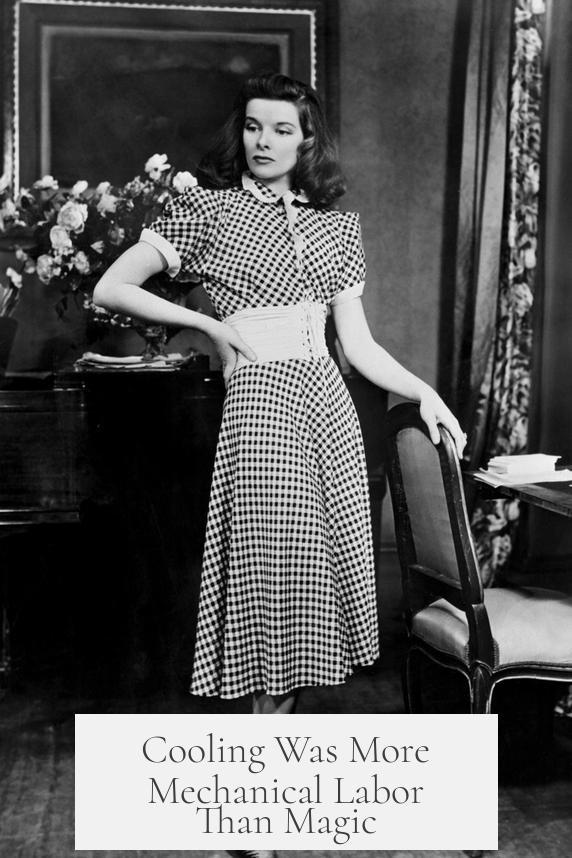
These massive water-based systems had their pros and cons. On the plus side, they were better in terms of energy consumption compared to alternatives. But the cons were real: water consumption was high, the cooling uneven, and some parts inside felt muggy while others were cold spots. Imagine trying to find a sweet spot in your office where you weren’t drenched in sweat or shivering under a fan.
That brings us back to the 1940s office suit dilemma. While these buildings did have some cooling, it was not consistent. And unlike today’s HVAC systems that heat or cool air uniformly, early systems often pushed large volumes of air to refresh indoor conditions, sometimes primarily just ventilating rather than chilling the space. This means, yes, sometimes it did feel warm inside, but dramatically less than outside temperatures — certainly not the full 90-degree oven environment you might picture.
Windows Open, Fans Whirring: Alternative Comforts
Also important to remember: windows could usually be opened back then. This was a major difference from today’s sealed commercial skyscrapers. An open window, a breeze, a personal fan, or even strategically scheduled work hours could make tolerating the heat easier. Modern buildings, in contrast, tightly seal off natural ventilation for efficiency, forcing reliance on mechanical cooling alone.
So next time you watch a black-and-white 1940s film with suited men typing away comfortably in office buildings during summer, remember: they weren’t just suffering silently under layers of polyester and wool. The buildings had working ventilation and cooling systems, primitive but effective enough to keep the heat from hammering them relentlessly.
Was It A Hot Mess Compared to Today? Absolutely.
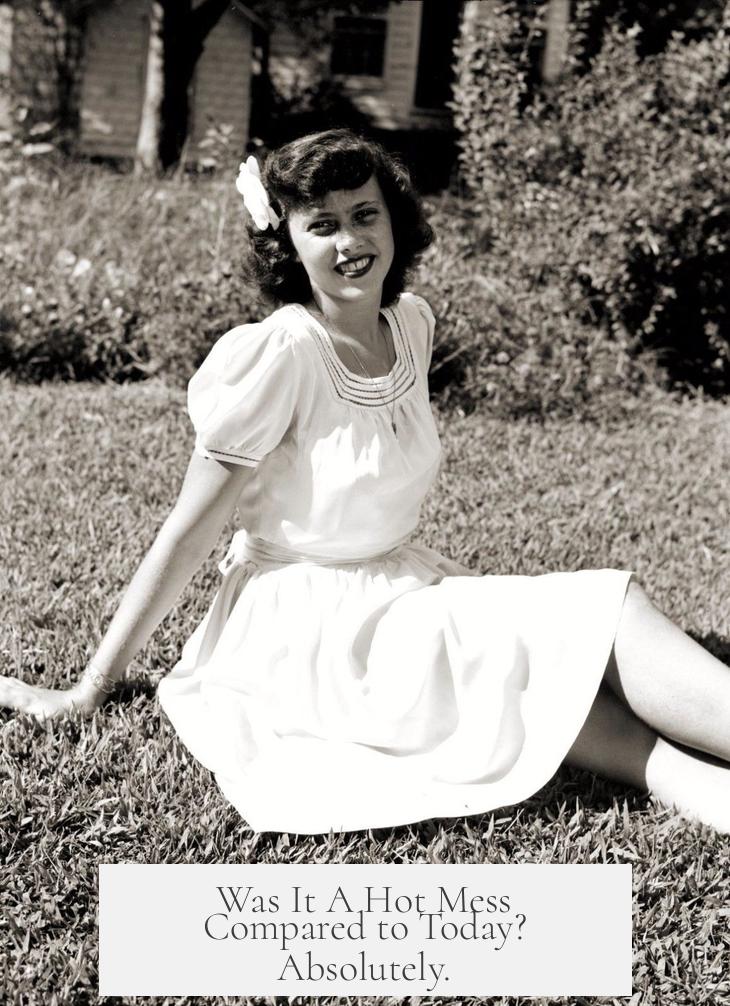
But by modern comfort standards, those offices lacked precision climate control. Temperature swings, uneven airflow, noisy fans and water pumps, and limited zones for cooling meant their comfort was patchy. Workers likely adjusted by dressing slightly lighter under jackets, using personal fans, or simply enduring with a bit more patience than we might tolerate today.
Interestingly, the evolution of office attire also ties into this. As the century progressed and cooling improved, dress codes gradually relaxed. The once-obligatory full suit and tie gave way to lighter fabrics and informal wear—another subtle sign that air conditioning transformed how people worked and what they wore by reducing the physical burden of heat.
To Sum Up: Heat Was Managed, Not Melted
- Residential AC widespread adoption came late—1970s to ’80s—but commercial systems were old news by the 1940s.
- These early commercial systems were large and bulky, relying on cooling towers and water circulation.
- Cooling was uneven and less efficient but better than no system at all.
- Offices likely felt uncomfortable compared to today but were not unbearably hot.
- Open windows, fans, and early cooling tech helped adjust conditions.
- Worker attire reflected some adaptation to the environment.
So, 1940s office workers weren’t just sweating through their shirts and jackets in a sauna every day. They had cooling support, albeit imperfect, that allowed them to focus more on paperwork than personal discomfort. Next time, enjoy that black-and-white flick without imagining your favorite character melting into the carpet!
